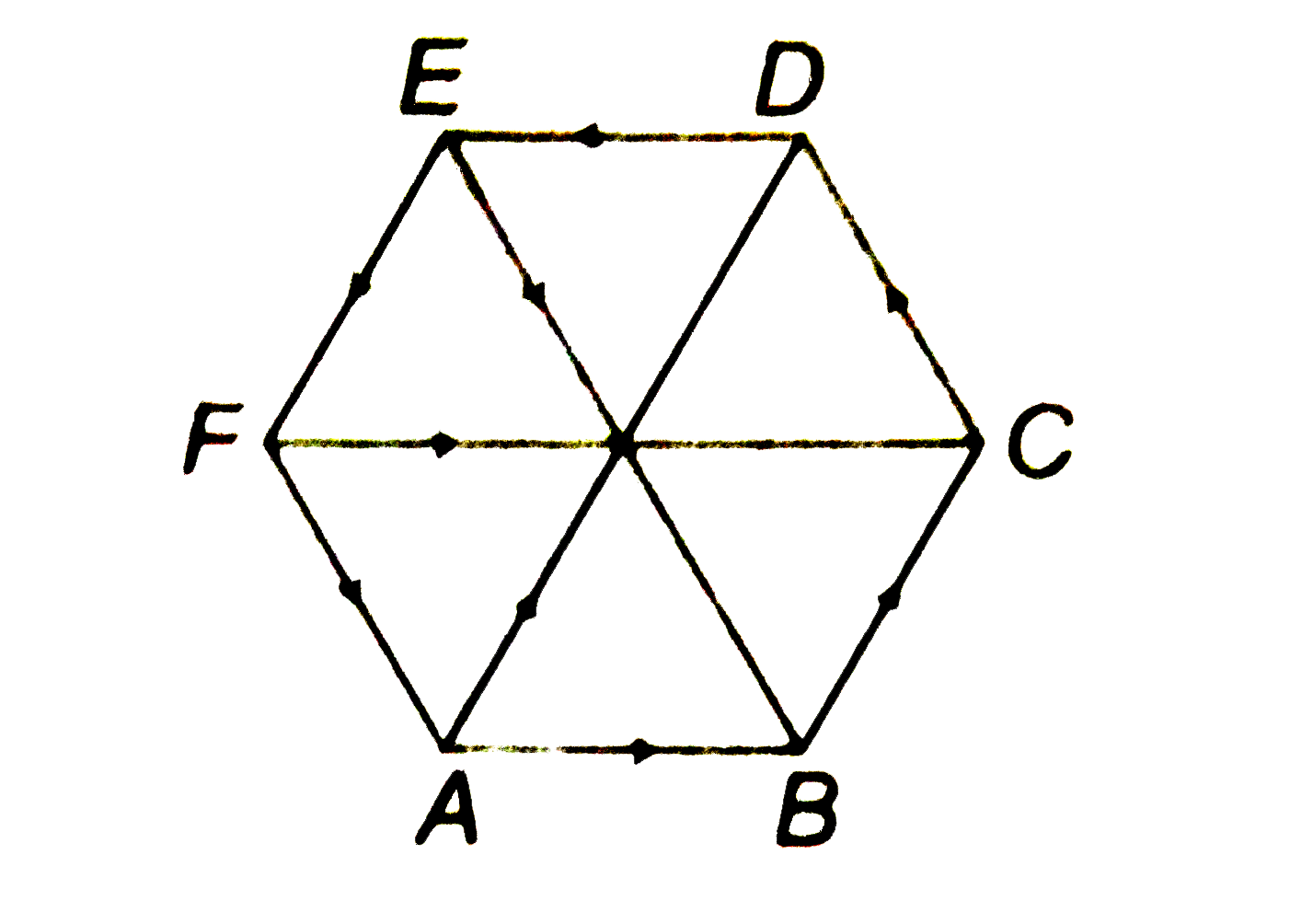If ABCDEF is a regular hexagon then −−→AD+−−→EB+−−→FC equals :Solution in Gujrati
0
2AB
3AB
4AB
The correct Answer is:D
A regular hexagon ABCDEF.

We know from the hexagon that AD is parallel to BC orr AD=2BC is parallel to FA or EB=2FA and FC is parallel to AB or FC=2AB.
Thus, AD+EB+FC=2BC+2FA+2AB
=2(FA+AB+BC)=2(FC)=2(2AB)=4AB.
Similar Questions
Consider the regular hexagon ABCDEF with centre at O (origin).
Five forces −−→AB,−−→AC,−−→AD,−−→AE,−−→AF act at the vertex A of a regular hexagon ABCDEF. Then their resultant is -
View SolutionABCDEF একটি সুষম ষড়ভুজ যার কেন্দ্র 'O' মূলবিন্দুতে অবস্থিত | −−→AD+−−→EB+−−→FC -এর মান হবে-
View SolutionConsider the regular hexagon ABCDEF with centre at 0 (origin),then if −−→AD+−−→EB+−−→FC is equal to k(−−→AB) .then k is
View SolutionABCDEF is a regular hexagon. Find the vector →AB+→AC+→AD+→AE+→AF in terms of the vector →AD
View Solutionयदि ABCDEF एक समषट्भुज हो, तो −−→AD+−−→EB+−−→FC=
View SolutionABCDEF is a regular hexagon with centre a the origin such that −−→AB+−−→EB+−−→FC=λ−−→EDthenλ= (A) 2 (B) 4 (C) 6 (D) 3
View SolutionIn a regular hexagon ABCDEF, prove that −−→AB+−−→AC+−−→AD+−−→AE+−−→AF=3−−→AD
View SolutionIf ABCDEF is a regular hexagon, prove that vec(AC)+vec(AD)+vec(EA)+vec(FA)=3vec(AB)
View Solution
